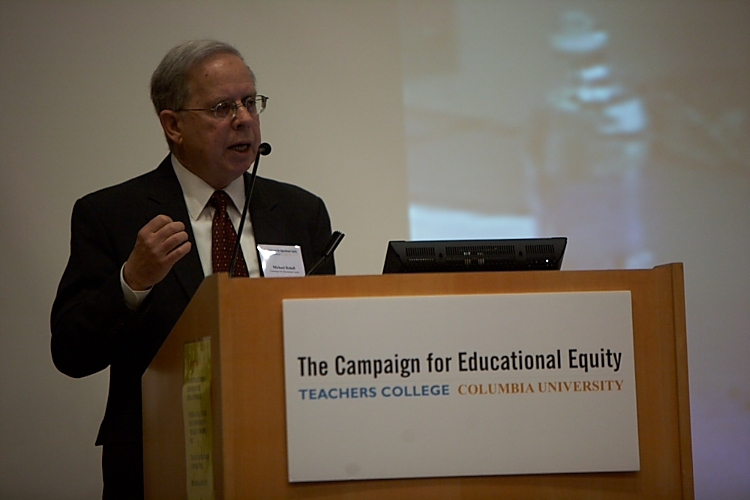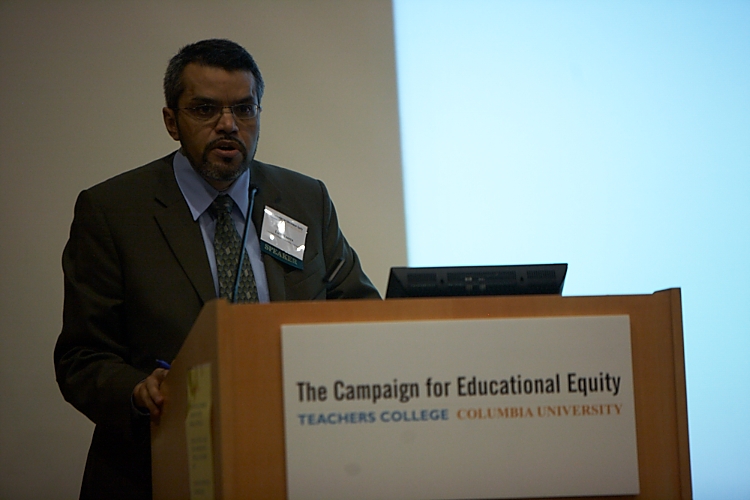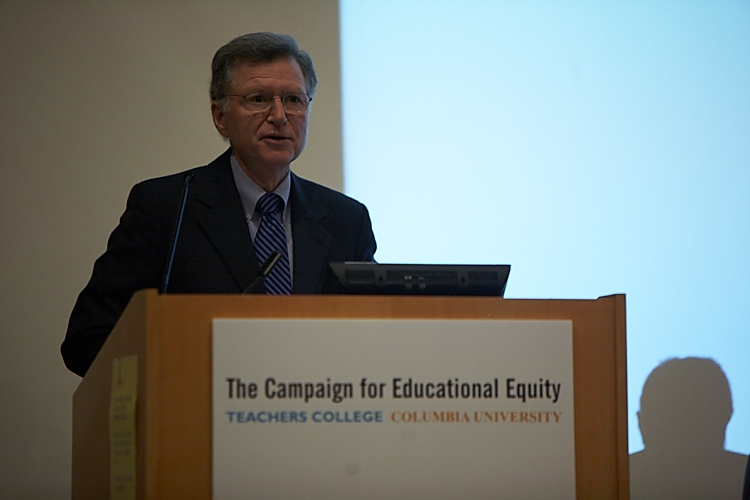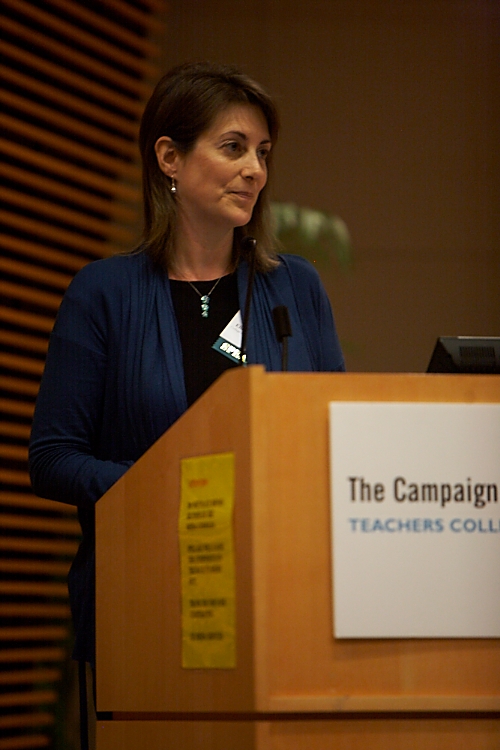Equity Symposium Examines $100 billion Federal Bailout for Education
Research presented by the Jack Jennings, chief executive of the Center on Education Progress, found that 44 states have already spent up to 70 percent of the two-year grants provided by the 2009 American Recovery and Reinvestment Act (ARRA), raising questions about whether the states will hit a “funding cliff” and run out of money before 2012. The study also cast doubt on whether states will be able to keep education funding above 2008 or 2009 levels, which Congress would like them to maintain. Midyear budget cuts this year have already pushed some state education budgets below these figures, Jennings said.
In addition, a study by Michael A, Rebell, director of the Campaign for Educational Equity; Jessica A. Wolff, the Campaign’s policy director; and Daniel A. Yaverbaum, a researcher with the Campaign; found that all 20 states that they examined used the federal bailout money to fill in severe budget deficits, rather than on measures that would result in long-term reform, one of the stated aims of the stimulus bill.
Professors, public policy analysts and government officials at the symposium said that, in most cases, the federal bailout money has been used to avoid massive layoffs in school districts reeling from recession-gutted budgets. But based on detailed analysis of funding applications and budget documents, many states took advantage of flexibility in the law to do things that were contrary to DOE expectations. Some states used bailout funds intended for low-income or special-needs children for other programs, or spent the money according to state funding formulas that perpetuate funding inequities between wealthy and poor districts.
“Some states kept inequitable funding formulas in place,” said Bruce Baker of Rutgers University, who, with David G. Sciarra and Danielle Farrie of the Education Law Center in Newark, New Jersey, examined the records of 11 states. “The federal funds just served to reinforce the inequities.”
States accepting federal funds were required to assure the Education Department that they would make progress on four reform measures: establishing or improving data systems and testing to assess and track student progress, improving or closing underperforming schools, and improving teacher quality and the fair distribution of qualified teachers to poorer school districts. Jennings said states made progress in the first two categories, largely because most had already begun to address them. But they mostly failed to advance efforts to move better teachers into low-performing schools or take other steps to improve them, mostly because they do not have the capacity to absorb and quickly spend a large infusion of federal aid. “We’re trying to put the spotlight on the lack of capacity at the state level,” he said.
In order to spend the funds quickly, states expanded the number of students who qualified for low-income assistance in programs such as Title I. According to research presented at the symposium, once the federal money runs out, states may not be able to maintain services to those extra students. “The federal government is promising reforms way beyond what it’s capable of carrying out,” said Maris S. Vinovskis, professor of public policy at the Gerald R. Ford School of Public Policy at the University of Michigan, who gave a paper on the growing influence of the federal government on local school districts.
Rebell, an attorney who successfully sued New York State on behalf of New York City plaintiffs in an education equity lawsuit, said states’ inattention to the education of poor students violates their constitutional rights, which should be protected in good economic times as well as bad. “Constitutional rights are not conditional and do not evaporate during times of recession,” he wrote in a paper on the constitutional implications of the bailout program, presented at the symposium. “Children’s need for meaningful educational opportunity cannot, therefore, be deferred because tax receipts are lagging.”
Keynote addresses were delivered by live video by Governor Edward G. Rendell of Pennsylvania, who has insisted that funding for educational equity provisions in his state continue as scheduled despite the current economic downturn; and Russlynn Ali, Assistant Secretary for Civil Rights, U.S. Department of Education, who is responsible for enforcing civil rights law in schools.
The symposium also included a panel discussion on New York City and New York State, including Daniel Lowengard, superintendent of Syracuse schools, and Mary Anne Schmitt-Carey, president of Say Yes to Education in Syracuse. A panel of national education equity experts included Joseph Martin, executive director, Consortium for Adequate School Funding in Georgia; Timothy Martin, superintendent of schools, Chamberlain, South Dakota; and Candace Cortiella, founder and director, Advocacy Institute. Mitchell Chester, commissioner of elementary and secondary education for the State of Massachusetts, participated with Jack Jennings in a discussion about maintaining educational opportunity in hard times.
To view the papers, go to http://bit.ly/9D8MMg . To read a New York Times story on research being presented at the symposium, see http://nyti.ms/a0G6KE. To read an op-ed in The Huffington Post by TC's Michael Rebell on the unconstitutionality of current school budget cuts, see http://bit.ly/9nEoRy.
Published Thursday, Feb. 11, 2010








